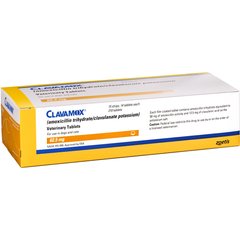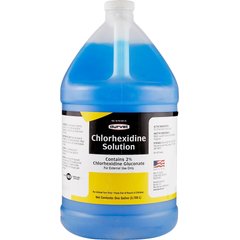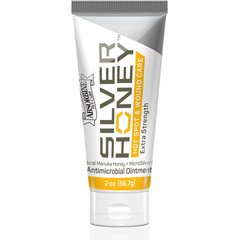Cat Abscesses: What Are They, and How Do You Treat Them?
FreshSplash/E+ via Getty Images
What Are Cat Abscesses?
A cat abscess is a wound that becomes infected, leading to pus accumulation beneath the skin. Abscesses are often swollen, painful to the touch, and make affected kitties feel really uncomfortable.
Cat abscesses are very common as the result of a cat fight.
Cat’s mouths have lots of bacteria that are pushed deep beneath the skin when their teeth puncture a surface. The bacteria multiply and the body sends white blood cells to try and fight off the infection. As these white blood cells accumulate, a pocket of pus forms. This pocket is called an abscess.
Cats often stop eating and are lethargic when they have an abscess, so prompt treatment is recommended. Leaving the abscess untreated may lead to it rupturing open, which can result in an even larger wound.
Symptoms of Cat Abscesses
Symptoms of cat abscesses include:
Causes of Cat Abscesses
Cat abscesses are caused by a bacterial infection. Most commonly the bacteria come from a bite wound. Sometimes deep scratches, penetrating sticks, weed seeds, or other puncture wounds can cause an abscess to form as well.
Cats can also get abscesses on their face from an infected tooth root, rather than a wound. On rare occasions, cats get internal abscesses from bacteria invading the lungs, liver, pancreas, or brain.
How Veterinarians Diagnose Cat Abscesses
Abscesses are usually diagnosed by a physical exam. Your vet will likely palpate (feel) all over your cat’s body. They will take your cat’s temperature and get a thorough history about their exposure to other cats and the outdoors.
Your vet may recommend aspirating fluid from any swollen regions to determine the cause of the swelling.
They may follow up with looking at the cells from the swollen tissue under the microscope to confirm it’s bacterial or send it off for a culture and sensitivity test.
This test involves placing the discharge on a petri dish to determine which type of bacteria is causing the abscess. They can then use small antibiotic impregnated discs to find out which antibiotic will work the best to kill that strain of bacteria.
More serious internal abscesses may require blood work or imaging to determine a diagnosis.
Treatment of Cat Abscesses
Abscesses are usually treated by draining and cleaning the wound and starting your cat on a course of antibiotics.
Fortunately, most cats respond well to treatment.
Sometimes abscess treatment can be done on an outpatient basis, but other times your veterinarian may need to surgically open the abscess with your cat under anesthesia, which may require an overnight stay.
It’s important to follow all medication instructions if your cat goes home with oral antibiotics.
Antibiotic selection varies, depending upon the suspected bacterial agent at play, but Clavamox® is very common.
Sometimes Convenia®, a long-acting injectable antibiotic, may be given instead to avoid oral medication in cats that will not take pills or liquids.
Pain medication such as Onsior™ may also be prescribed for your cat.
Cats with a tooth root abscess need the affected tooth removed. These kitties will also get antibiotics after surgery and may need to stay in the hospital overnight while recovering.
Recovery and Management of Cat Abscesses
Once drainage has been established and the abscess is open and clean, it will need to heal.
It’s important that your cat remain indoors during this period to keep the wound clean and avoid access to flies, so that maggots do not become an issue.
A Comfy Cone™ may be necessary if your cat is trying to lick their wound. Your vet may or may not recommend topical products to help with wound healing, like chlorhexidine solution or medical manuka honey.
Talk to your vet before applying any products.
Probiotics may be helpful to restore normal gut flora following the course of antibiotics. Depending on the size of your cat’s wound, most abscesses will heal in a matter of one to two weeks.
Prevention of Cat Abscesses
Cats allowed outside are much more likely to get abscesses than indoor cats.
Avoiding exposure to other cats who may have territory squabbles with your cat, as well as the risk of injury by a penetrating foreign body (like a stick or nail), is also reduced by keeping your cat indoors.
Cats that have not been neutered are more likely to get into tussles with other cats. Making sure your pet is spayed or neutered may reduce their risk of fighting and subsequent abscesses.
Maintaining oral health with regular dental procedures may also reduce your cat’s risk of future abscesses in the mouth.
Cat Abscesses FAQs
How much does it cost to have a cat abscess drained?
Treatment for cat abscesses costs vary based on where you live, the location of the abscess, how extensive it is, and whether sedation, anesthesia, or prolonged wound care is required.
Generally, it can cost anywhere from $200 to $2,000 to treat an abscess.
Will a cat's abscess heal on its own?
Occasionally, a small abscess that ruptures on its own may heal without medical intervention.
This is a big gamble to take, however, because untreated infections can spread throughout the body and make your cat sick, especially if they’re immunocompromised (have a pre-existing medical condition).
Bite wounds are the main cause of abscesses in cats, and other diseases such as feline leukemia, feline immunodeficiency virus (FIV), and even rabies can be spread through a bite.






